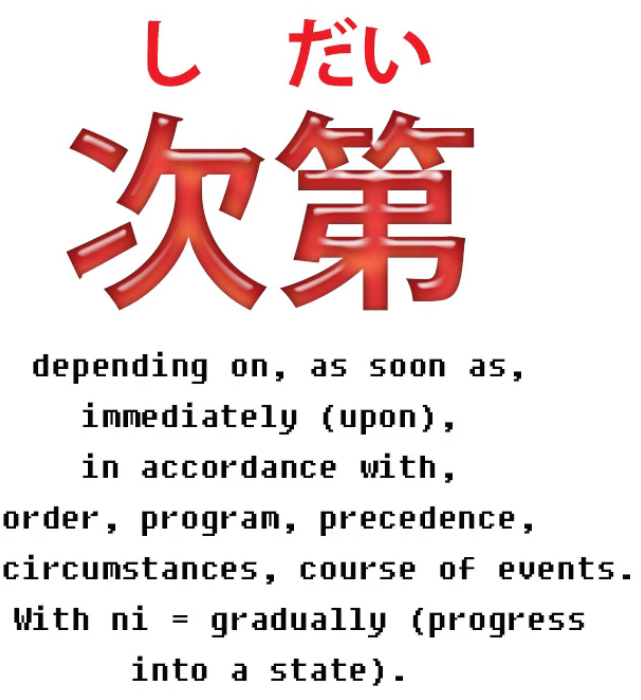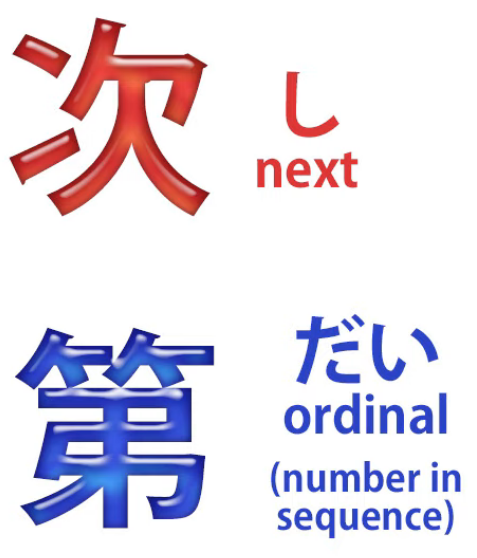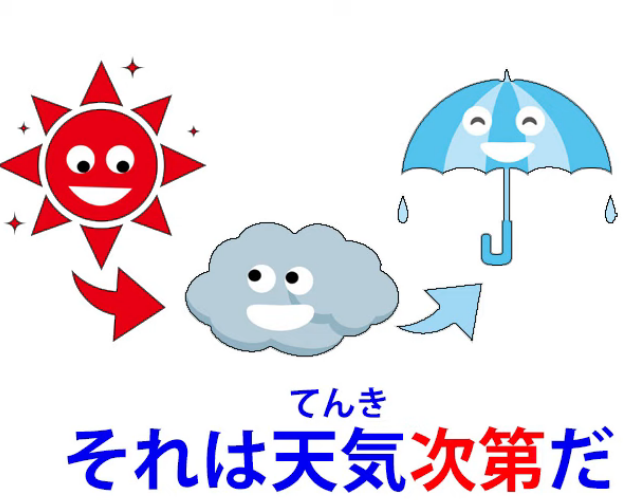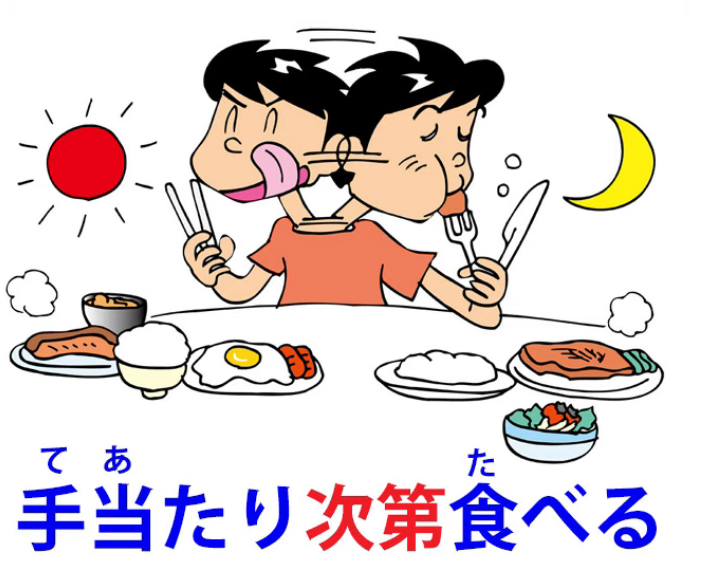次第 (shidai) - What it really means and how it really works. Lesson 86
こんにちは。
Today we’re going to talk about one of those words
that has a huge list of apparently unconnected meanings,
if you take the English-Japanese dictionary seriously,
which makes it feel very difficult.
But as is usual in these cases, the real problem is simply
trying to fit the square peg of English definition
into the round hole of Japanese.
So, if we take a look at the word we’ll be able to understand
what it really means and how it really works.
The word is 次第.
According to the dictionary, it can mean depending on, as soon as,
immediately upon, in accordance with, order, program,
precedence, circumstances, course of events.
And then we have what the conventional textbooks
like to call a grammar point: 次第に, which means
gradually in the sense of gradually progress into a state.

So, how do we make sense of all this?
What is 次第?
Well, let’s start by looking at 次第.
次第 is made up of two kanji and it’s a noun.
And you ought to know that as soon as I say it’s made up of two kanji
and nothing else, we know that it’s a noun. That’s all it can be.
And the two kanji are:
this first one, which is the kanji we use in 次 (next), and that’s what it means, next.
And this one, 第, which is the Japanese ordinal.

Now, what’s an ordinal?
In English, an ordinal is the -st in first,
the -nd in second, the -rd in third, the -th in fourth etc.
In Japanese, fortunately, we only have one ordinal for every number
and it’s 第, and we put it before the number, not afterwards.
So if we want to talk about the third episode of an anime
we say 団三話; so the 第 is the -rd, the 三 is the three,
and 話 is the counter for stories or episodes.

So, we have the 次 / つぎ kanji, the next kanji,
whose regular on-reading is し,
and we have 第 / だい, meaning ordinal / sequence / number in sequence.
So what it means is next thing in sequence / next thing in order.
And one more thing we need to know about this word
is that it generally works by attaching to another noun.
And this gives us a kind of compound.
So if we attach 時計 to 腕, 腕 is telling us about the 時計.
腕時計 is an arm-clock (a wristwatch).
If we attach 砂 / すな to 時計 then we have a sand-clock (an hourglass) - 砂時計.
And similarly we form these noun-compounds
with 次第 and whatever it’s attached to.
次第 as as soon as or immediately upon
And the simplest use of this is where it replaces
the English expression as soon as or immediately upon.

So, if we say, 分かり次第お電話します,
we’re saying, ”As soon as (it) becomes known…
(分かる, become known; literally, do known, do understandable)…
As soon as it becomes understandable, I’ll call you.”
What you see that we have here the い-stem of 分かる (do understandable),
which is 分かり,
and we’re creating a compound noun, which means
“next thing in sequence after doing understandable is that I’ll call you /
As soon as it becomes understandable, as soon as we know the situation, I’ll call you.”
=分かり次第お電話します
食事の用意が出来次第食べる.
So, although here we actually have a logical clause:
食事の用意が出来る (preparations for the meal are completed; literally, come out),
we actually have the stem of できる here, which is 出来 / でき,
and that’s attached to 次第.

So, ”the next thing in sequence after the preparation’s been completed is eat /
As soon as the preparations for the meal are finished, we’ll eat“.
=食事の用意が出来次第食べる
次第 as depending upon
And from this logic we then get what seems to be
a completely different idea in English, which is depending upon.
So we might say, それは天気次第だ.

In English we’d say that depends on the weather.
But in Japanese what we’re saying is that follows directly from the weather.
And, as you see, it’s a different way of putting it,
but it means fundamentally the same thing.
彼の答えは気分次第だ. Now, that means his answer follows directly from his mood.
In other words, his answer depends on what mood he’s in.
手当たり次第 phrase
And a useful phrase to know here is 手当たり次第.
手当たり is 手 (hand) and 当たり (touch or contact).
手あたり次第 means whatever one can lay one’s hands on / whatever comes to hand.

So, 手あたり次第本を読む (I read whatever book comes to hand).
Reading a book follows directly from hand-touch of a book, literally.
手当たり次第 can be used in all kinds of constructions:
I eat whatever comes to hand; I read whatever comes to hand;
I throw whatever comes to hand at the neighbors.
And, as you see, it’s the noun-form of this verb (touch) 当たる,
which is 当たり, which attaches to 次第.
Attaching 次第 to a person
Another useful trick is that we can attach 次第 directly to a person.

So if we say あなた次第です, we’re essentially saying
it’s up to you / it follows directly from you.
Now, this wouldn’t be expressed in English as depends on,
and in fact if we wanted to say it all depends on you in Japanese,
we’d have to use a different kind of construction altogether.
Within the Japanese meaning spectrum,
what あなた次第だ means is it follows directly from you:
It’s up to you, it’s not up to anyone else, it doesn’t follow from me,
it doesn’t follow from anybody else, it follows directly from you, it’s up to you.
The important thing to understand here is that while
the English meaning spectrum and the Japanese meaning spectrum differ,
in Japanese terms we’re dealing with the same fundamental idea all the time.
It’s not a random selection of ideas, the way it looks as if it is
when you see it in an English-Japanese dictionary.
次第 as according to
From here we get meanings like according to:
値段は品次第で違う, which literally means
the price differs directly following the goods.

Now, if the goods are the same, which they usually are in this kind of a construction,
then it would mean the quality of the goods, just as
天気次第 means the quality of the weather, the type of weather,
and 気分次第 means the quality of somebody’s mood, the type of mood.
So, 品次第 means the type of goods, the quality of goods.
Now, we can still use the depending translation here
and not the according to translation.
We could say, The price depends on the quality of the goods.
However, if we use an expression like 身分次第に暮らす,
we’re saying live according to one’s station in life, according to one’s means.

We can’t use depend here in English, but as you see
as far as Japanese goes it’s exactly the same idea.
身分 isn’t quite translatable, but it means one’s position in life, one’s status,
and it can, particularly in modern times, mean how much money one has.
次第 as a process, a set of circumstances, a course of events
Now, in some cases, and this is where it becomes a little more extended,
しだい (next in sequence) can represent the whole sequence.
So in these cases it can mean things like a process,
a set of circumstances, a course of events.
So one might say, それはこんな次第だった
(it was this kind of situation, it was this kind of a sequence of events).
次第に
Now, we also have what the textbooks would call the grammar point, 次第に.
This is simply the standard practice of taking a noun (次第 is a noun)
and using it adverbially to describe a verb.
And doing something 次第に, in a 次第 manner,
is as a sequence of steps or gradually.
So, チェシャ猫は次第に消えた
(The Cheshire Cat disappeared gradually).

Or 夜は次第に長くなる
(the nights are growing longer, day by day, step by step).
And this always implies a process taking place over time
either in definite stages or not, but taking place over time, bit by bit.
And because this is put forward as a grammar point, it can be a bit confusing.
What we need to notice is that not every use of 次第 that is followed by に
corresponds to this so-called grammar point.
The real issue here, which doesn’t tend to get explained, is that
when 次第 is not modified by another noun
and it’s on its own acting as an independent adverb,
that’s when it has this meaning.
So, in the example we saw earlier, 身分次第に暮らす,

that isn’t an example of this. It is being used adverbially,
but what’s modifying 暮らす is not 次第 on its own but the compound 身分次第.
So these are the fundamental uses of 次第.
They seem very different if you look at them through English glasses,
but if you look at them as they are, I think we can see that
次第 works pretty much the same way all the time.
